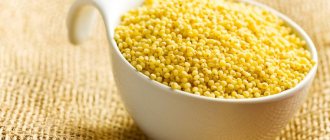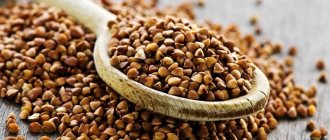How many calories are in grapes
On average, grapes have a calorie content of 65 to 72 calories per 100 grams of product. It all depends on the variety. Sour varieties are lower in calories, sweet varieties are the opposite. Homemade berries will contain fewer calories, but beautiful store-bought ones will contain more.
The daily consumption rate of this product is about 10-15 large berries per day. Half a kilogram is already a lot, even for an adult, but in a single case it is quite acceptable.
The “ceiling” in the weight limit of this delicacy is 2 kg. A larger amount can lead to digestive disorders, although the point here is not in the energy value, but in the other components of the grapes.
Calorie content of wines and juices
For people who monitor the composition of their menu, it is important to know that the calorie content of store-bought or homemade wine may be slightly higher than fresh raw materials. It depends on the carbohydrate content and alcoholic strength.
Dry white wine has the lowest calorie content - about 66 kcal, followed by dry red wine - about 75 kcal. Semi-sweet wines and champagne can reach 96 kcal, and dessert wines are even higher, their energy value is almost 175 kcal.
If a person had doubts about the benefits of grapes, then this berry would not have been cultivated for such a long time. As you know, the first information about the cultivation of grapes comes to us from sources in Syria, Egypt and Mesopotamia. The vine has been known there since the 6th century BC. So appreciate the benefits that nature can provide.
Calorie table
The energy value depends not so much on the color as on the type of product. We will provide data on the calorie content of lady fingers, taifi, sultanas (green seedless grapes), as well as some other varieties per 100 grams of product in the table:
| Variety | Energy value, cal |
| Lady fingers | 43 |
| Taifi | 65 |
| Kishmish | 95 |
| Red grapes | 64 |
| Black domestic grapes | 70 |
| Green home | 69 |
| Isabel | 65 |

The most high-calorie is sultana, beloved by many. These are seedless grapes, but despite this, they contain the most sugars, which explains their high energy value (compared to other varieties). At the same time, the lowest-calorie variety is the sourish, but no less tasty variety of lady fingers.
Glycemic index
We found that the energy value of grapes is not the weak point of the berry. What should really alert you is its high glycemic index. This indicator indicates the rate of breakdown of carbohydrates in food during consumption. The faster the breakdown of carbohydrates, the less satiety the product brings.
This is why it is so difficult to stop and limit yourself to a few berries; fructose and glucose are supplied in large quantities, but hunger does not leave you.
The glycemic index of light grape varieties ranges between 45 and 60 units, and black ones are slightly less - from 43 to 54.
For example, spinach has a glycemic index of 15 units. That's why you get full of spinach faster than with ripe berries.
How to eat to lose weight
Nutritionists argue about including grapes in various types of weight loss diets. The fact is that, for a berry, it is a very high-calorie product. In addition, it stimulates appetite, which is extremely undesirable in terms of weight loss.
Eating this product leads to a rapid increase in blood sugar. Saturation comes quite quickly. However, the feeling of hunger will not keep you waiting long, which is why it is often completely excluded from the list of fruits allowed in the diet.
If you're on a strict diet and grapes aren't on your list of allowed foods, you're probably better off avoiding eating them altogether. In addition, in some cases (for example, diabetes) it is even included in the list of strictly prohibited products, guided solely by medical indications.
On the other hand, the same nutritionists admit that this product perfectly stimulates metabolic processes in the body. Polyphenols found in berries perfectly regulate fat metabolism in the body. That’s why some experts recommend grape diets to combat excess weight.
However, even a three-day or a week-long mono-diets are still a test for the gastrointestinal tract. Therefore, it is much healthier and more effective to simply include berries in your menu as a snack between main meals.

Despite all the benefits and the words of nutritionists, this product should be categorically abandoned by people who have:
- caries;
- food allergies;
- colitis;
- peptic ulcers of the digestive system;
- heart failure;
- diabetes;
- high degree of obesity.
Use for weight loss
Many people like to eat grapes for a reason, but as part of various salads, jellies, and sauces. He is able to decorate various dishes and add exotic notes to them. Here are the main arguments against using such a product when fighting extra pounds.
A high concentration of fast carbohydrates in grapes is strictly contraindicated on a low-carbohydrate diet. When grape juice enters the body and is digested, a jump in glucose levels occurs, which is inevitably followed by a quick return of the desire to “kill the worm.” This contributes to breakdowns on even more dangerous products, such as chocolate, sweets, and baked goods. There are very few who can be content with a handful of grapes weighing 100 grams, because this is only about ten pieces. Usually, a serving weighing at least 400 grams can satisfy your craving for wine berries, and this does not at all correspond to the dietary concept of nutrition.

If you weigh all the pros and cons, then you can only allow yourself grapes on a diet if you can stop at a small handful a day. And you should choose dark grapes with seeds. Despite the fact that it is slightly higher in calories than white, its beneficial properties for the body are much more diverse. Such varieties contain more polyphenols, which trigger metabolism, which is so necessary for weight loss, and have an equally important antioxidant effect.
The safest variety can be called “Kishmish”, which comes in different shades, but always does not contain seeds. It has a positive effect on the functioning of the gastrointestinal tract.
There are also separate diets based on the consumption of grapes, with which you can achieve a loss of three kilograms in a matter of days. We present to your attention the mono-diet:
- on the first day, eat half a kilogram of grapes;
- on the second day, eat 1 kilogram of wine berries;
- on the third day you need to lift even more - 2.5 kilograms.

During the day, eat handfuls of fruits 5-6 times a day. You also need to remember to drink plenty of fluids. An important nuance is that grapes have a diuretic effect, which means you don’t need to eat them right before bed. The diet is seasonal, since grapes are an autumn fruit. During the harvest period, the likelihood of it containing harmful chemicals is reduced, and for genetic reasons, the digestion of seasonal fruits occurs better at the appropriate time of year.
Given the high calorie content of grapes, avoiding other foods for these few days brings results, and the biologically active substances of the berry help improve your silhouette. It is no coincidence that such a trend in medicine has developed as ampelotherapy - treatment with grapes.

There are other diets, the diet of which is not limited to grapes alone, but includes dishes with this product.
Rice with shrimp and grapes
- rice - 5 tablespoons;
- grapes – 100 grams;
- shrimps – 5 pieces.
Preparation:
Cook the rice and combine the cereal with grapes. Fry the seafood in oil, add some salt, add a pinch of pepper or other spices to taste and decorate the dish with rice on top.

Grape jelly
- apple - half;
- grapes – 50 grams;
- grape juice – 150 milliliters;
- gelatin – 10 grams.
Dissolve gelatin in 25 ml of water and wait until it swells. Dilute it with warmed grape juice. Cut the fruits, pour the mixture over them and put them in the refrigerator for an hour.

Most people today buy food in hypermarkets and small retail stores, and the quality of the products there may be worse than in grocery markets. To choose the most delicious and healthy bunches in the store, you need to examine the grapes visually.
A light coating on the berries is a good sign that indicates the freshness of the product. Having looked at the bunch, shake it a little in the air, the berries should not fall off, and the skin should not fly off. The presence of small dark specks also indicates the good quality of the product, and specifically that the manufacturer did not abuse chemical fertilizers when growing it.
Nature has generously endowed grapes with beneficial properties, due to which they have become a popular product all over the world. Use its best properties to improve your health, but do not overdo it so as not to harm your figure.
For information about the beneficial properties and calorie content of grapes, watch the video below.
Composition of grapes
Grapes contain:
- sugars (mainly represented by glucose and fructose);
- pectins and their derivatives;
- organic acids (including tartaric, citric and malic);
- various enzymes of plant origin;
- vitamins;
- iron;
- zinc;
- potassium;
- magnesium;
- antioxidants (including tannins, anthocyanins, catechins);
- coloring matter;
- essential oils (there are especially many of them in grape seeds);
- about 80% water.
Proteins fats carbohydrates
100 gamma berries contain about 0.6 grams of protein. This is a low-fat product containing 0.2 grams of fat per 100 grams of grapes. Fat is represented mainly by essential oils. But you can’t call it low-carbohydrate - due to fructose and glucose, the same volume of deliciousness contains about 16.8 grams of carbohydrates.

Content of chemical elements
table 2
| Elements | Content | Daily norm |
| Iron (Fe) | 0.6 mg | 4.29 % |
| Iodine (I) | 8 mcg | 6.15 % |
| Potassium (K) | 225 mg | 6.43 % |
| Calcium (Ca) | 30 mg | 3 % |
| Magnesium (Mg) | 17 mg | 4.25 % |
| Manganese (Mn) | 0.09 mg | 4.5 % |
| Copper (Cu) | 80 mcg | 8 % |
| Molybdenum (Mo) | 3 mcg | 4.29 % |
| Sodium (Na) | 26 mg | 1.08 % |
| Selenium (Se) | 0.1 mcg | 0.18 % |
| Phosphorus (P) | 22 mg | 2.2 % |
| Fluorine (F) | 12 mcg | 0.3 % |
| Chlorine (Cl) | 1 mg | 0.04 % |
| Chromium (Cr) | 3 mcg | 6 % |
| Zinc (Zn) | 0.09 mg | 1.14 % |
At a medium level of importance are:
- I (iodine), takes part in blood formation and tissue respiration.
- K (potassium), helps the heart muscle work and removes unnecessary fluid from the body.
- Cu (copper) is involved in the process of hematopoiesis, growth and development of cells and tissues, and the construction of proteins.
- Cr (chromium), is involved in regulating the metabolism of fats and carbohydrates.
Low level elements of this product include:
- Fe (iron) is involved in blood formation.
- Ca (calcium) is necessary for bone and dental tissues.
- Mg (magnesium), helps increase the activity of food enzymes.
- Mn (manganese) is necessary for proper cell development and iron absorption.
- Mo (molybdenum), helps cleanse the body of harmful substances such as uric acid and aldehydes.
- Na (sodium) actively participates in the formation of gastric juice for the digestion process and, together with potassium, maintains the salt composition of the blood unchanged.
- Se (selenium), protects cells from free radicals and damage, slows down the aging process.
- P (phosphorus), required by the skeletal system and teeth.
- F (fluorine), like phosphorus and calcium, is required by the skeletal system and teeth.
- Cl (chlorine), participates in the formation of gastric juice and plasma formation, activates a number of enzymes.
- Zn (zinc), takes part in blood formation and tissue respiration.
Health benefits of berries
The chemical composition of berries includes the following vitamins:
- ascorbic acid (C);
- phylloquinone (K);
- retinol (A);
- choline (B4);
- cyanocobalamin (B12);
- folic acid (B9);
- pyridoxine (B6);
- nicotinic acid (PP);
- biotin (H).
Due to their chemical composition, grapes are very healthy if consumed in moderation. Berries normalize the functioning of systems such as:
- cardiovascular;
- hematopoietic;
- immune;
- digestive;
- genitourinary

This delicacy removes toxins from the body well, increases hemoglobin in the blood, and has a positive effect on recovery processes throughout the body and all organs. This is an excellent tonic that strengthens the entire body.
It has been scientifically established that berries have a positive and even stimulating effect on bone marrow tissue. Due to this, the function of hematopoiesis improves and the body’s defenses are stimulated.
The high content of ascorbic acid and the presence of vitamin P, due to which ascorbic acid is absorbed, have a positive effect on the overall resistance of the body, increasing its protective reaction. This is especially important during the cold season.
What are the benefits for the human body?
A separate big topic is the medicinal properties of grapes, confirming the positive effect on the human body. When including berries in your diet, you should not neglect the skin and seeds.
Regular consumption of sweet fruits will regulate the hematopoietic system, which will protect against external harmful influences. The production of red blood cells ensures a normal supply of oxygen to tissues and organs.
When treating diseases of the heart and blood vessels, grape fruits will prevent the formation of blood clots and help dilate blood vessels.
The consumption of these berries, due to the presence of nicotinic acid in the composition, reduces cholesterol levels in the blood and helps strengthen the walls of blood vessels.
How do grapes affect the human body leading an average lifestyle? A glass of fresh berry juice will provide you with vivacity and energy. A natural antidepressant will help overcome the unpleasant feeling of fatigue. It will also provide essential nitrogenous and tannin substances, important for maintaining general immunity. During intense mental stress, solar fruits help improve memory and activate brain activity.
Video about the miraculous properties of grapes
This video talks about the benefits of a product such as grapes, and also provides information regarding the difference in the number of calories depending on the variety.
Grapes are a very healthy berry. It cannot be called a low-calorie product, however, this does not prevent it from being included in the diet of some weight loss diets. And, nevertheless, the large amount of carbohydrates that these tasty and healthy berries contain should be taken into account in your diet, especially if you are learning to count calories for weight loss.
Regarding the issue of diets, it will be useful for you to find out what the calorie content of the same lemons or other fruits and berries, for example, peaches, apples or strawberries. This is also important to consider when drawing up the daily menu.
Do you like these healthy berries? In what quantities do you usually eat them? Have you ever been on a grape diet? Share your experience in the comments, it will be interesting and useful to other lovers of this delicious berry!
Author of the publication
Glycemic index
The glycemic index (GI) shows how quickly the carbohydrates in a particular product are broken down when they enter the body. This indicator is compared with the rate of breakdown of glucose in its pure form, it corresponds to 100. The faster the breakdown process, the higher the GI of the product.
Light grapes ripen much faster than other varieties. Thanks to this, it hits the table first and sells out quickly. Its GI ranges from 44-58 units, which means it cannot be called harmless for the figure.
Dark grape varieties are healthier for the heart; they are also famous for their high amount of antioxidant substances. Their glycemic index is also far from 100, but not low either - 44-52 units. Thus, grapes of any color cannot be called beneficial for the figure, given its GI.










